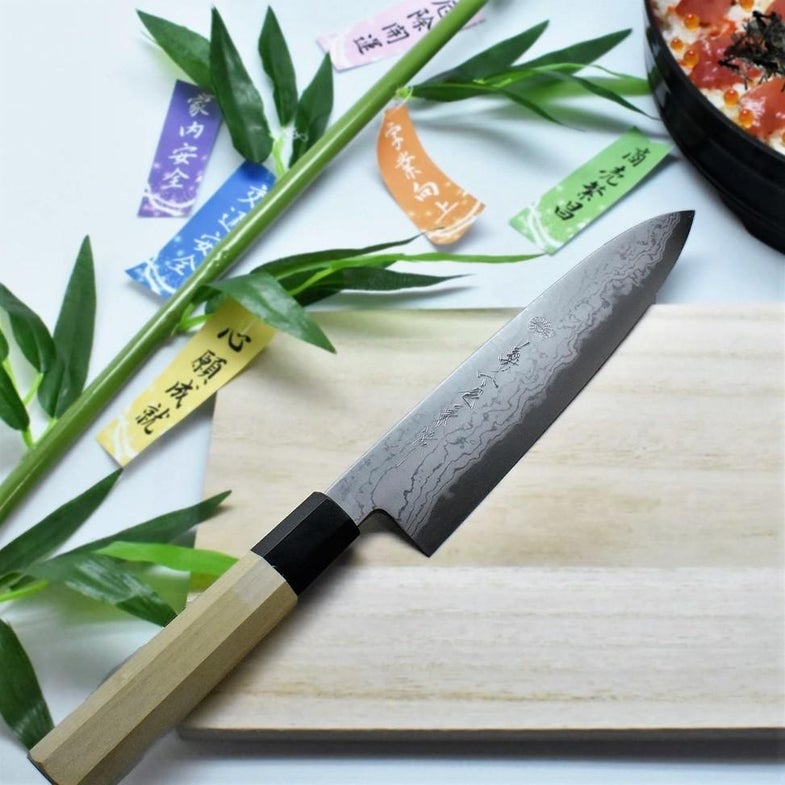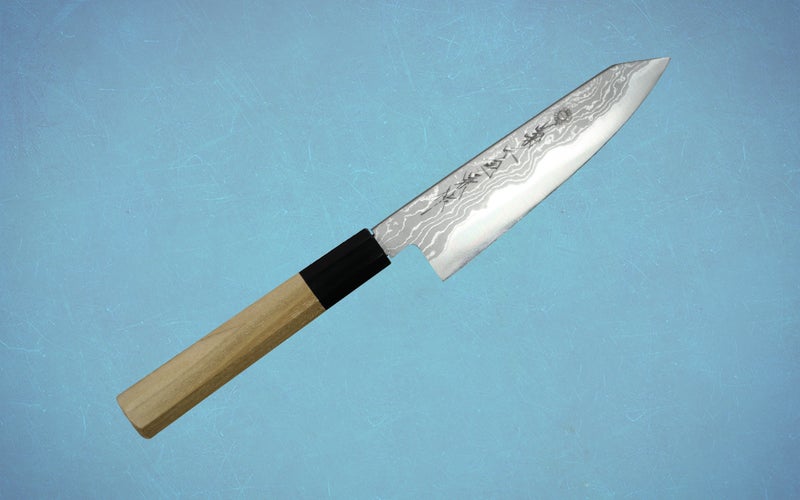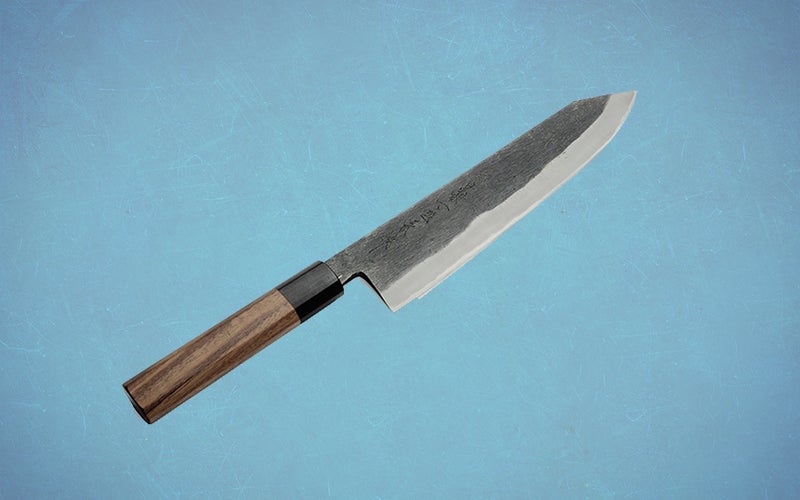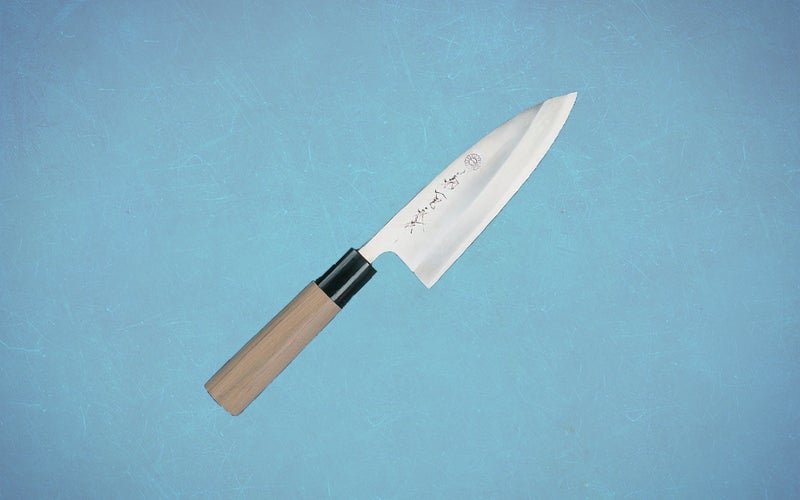Kikuichi Cutlery went from Samurai swords to kitchen knives
And we've got an exclusive deal with them for you.

We may earn revenue from the products available on this page and participate in affiliate programs. Learn more ›
Kikuichi Cutlery began making swords for Samurais in the early 13th century. It’s why the company still sits in Nara, Japan, the country’s first capital and widely considered an origin place for Samurai culture and sword making. The Emperor of Japan was so impressed by Kikuichi’s craftsmanship, he granted the company the right to engrave the royal symbol of the chrysanthemum flower onto their blades. Fast forward to present day: the company employs the descendants of the sword makers and—after a transition 150 years ago—forges hand-made kitchen knives. (The blades still bear the chrysanthemum.)
Harry Rosenblum, Kikuichi’s general manager in the U.S., explains that “while we don’t deal in Katanas, the process is very much the same.” Each blade in Kikuichi’s higher-end lines involves the work of at least four craftsmen. Each member of the team performs one step of the knife production. This four-step process consists of forging, sharpening, hand-carving the wooden handle, and assembly. In that last step, the two pieces are fit together and hand engraved with the chrysanthemum.
These knives aren’t cheap, but the prices reflect the quality of the materials and the time spent creating them by hand. The company manufactures cheaper, machine-made knives, too.
Right now, Kikiuchi is offering PopSci readers 25 percent off its blades. The discount is site-wide, excluding outlet items. Use the code POPSCI25 at checkout for the discount. Below are some blades I’m considering adding to my personal cutlery collection:
Kikuichi
The GKAD Gold Kokaji blade comes in two sizes: a 6-inch Bunka and an 8-inch Gyuto. It is a double-beveled blade—sharpened on both sides—made of a nine-layer Damascus steel that’s been hand-forged and stretched into shape. The handle is a traditional, comfortable octagonal handle made out of Japanese Magnolia wood with a band of water buffalo horn ferrule to fasten the handle and blade together. It’s an all-purpose knife.
Kikuichi
The KURO Kurouchi carbon steel clad knife comes in four sizes: a 6-inch Petty, 7-inch Santoku, 9.5-inch Chef’s knife, and a 10.5-inch slicer. Each version features an octagonal Walnut handle. The ambidextrous handle shape lends itself to single-piece steel blades and double-bevel blades that can cut from several directions. The blade—the perfect knife to de-head a fish or slice thin pieces of sashimi—has a White Carbon #2 core and iron cladding. Make sure to dry the blade after using; it can rust. A black oxide coating helps prevent rusting, but the sharpening process removes it from the fine edge. This is known as a Kurouchi finish.
Kikuichi
The Ginsan Stainless Series 7.5-inch Deba blade is a single-bevel knife—only sharpened on one side—and thinner than a typical kitchen knife. This makes it ideal for cutting into fish or poultry. The handle is made of a Ho-wood with water buffalo ferrule. The benefit of a stainless steel blade is that it’s easier to maintain and sharpen.
Interested in talking about deals and gadgets? Request to join our exclusive Facebook group. With all our product stories, the goal is simple: more information about the stuff you’re thinking about buying. We may sometimes get a cut from a purchase, but if something shows up on one of our pages, it’s because we like it. Period.



